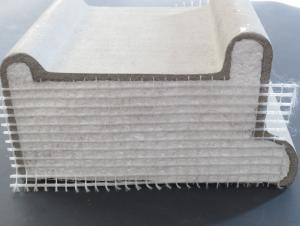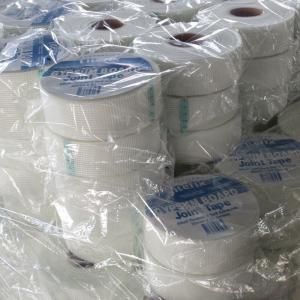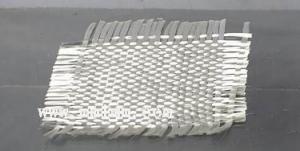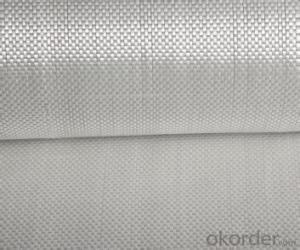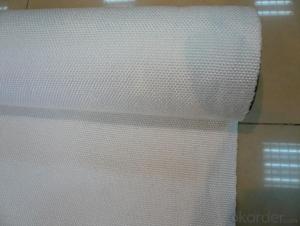Silica Fiberglass Fabrics
- Loading Port:
- China Main Port
- Payment Terms:
- TT OR LC
- Min Order Qty:
- -
- Supply Capability:
- -
OKorder Service Pledge
Quality Product, Order Online Tracking, Timely Delivery
OKorder Financial Service
Credit Rating, Credit Services, Credit Purchasing
You Might Also Like
Quick Details
| Type: | Place of Origin: | Brand Name: | |||
| Model Number: | Silica Fiber Cloth: | Silica Fiber Cloth material: | |||
| Silica Fiber Cloth MFG: | Silica Fiber Cloth thick: |
Packaging & Delivery
| Packaging Detail: | Silica Fiber Cloth package export carton box. |
| Delivery Detail: | 5-10 days. |
Specifications
1 Silica Fiber Cloth better than Silicaflex
2 Silica Fiber Cloth 96% SiO2 silica fiber
3 Silica Fiber Cloth high quality
1800°F / 982°C Continuous Exposure: Higher Intermittent
Silica Fiber Cloth
- Q: Can fiberglass fabric be used for insulation in mining operations?
- Yes, fiberglass fabric can be used for insulation in mining operations. Fiberglass fabric is known for its excellent thermal insulation properties, which makes it suitable for various applications, including mining operations. It can effectively trap heat and prevent its transfer, helping to maintain a stable temperature within mining environments. Additionally, fiberglass fabric is resistant to high temperatures, corrosion, and chemicals, making it well-suited for the harsh conditions often encountered in mining operations. Its lightweight and flexible nature also make it easy to install and work with in different mining structures and equipment. Overall, fiberglass fabric can be a reliable and effective solution for insulation in mining operations.
- Q: Can fiberglass fabrics be used for insulation in cryogenic applications?
- Yes, fiberglass fabrics can be used for insulation in cryogenic applications. Fiberglass has excellent thermal insulating properties and can withstand extremely low temperatures, making it suitable for cryogenic applications. It is commonly used in the construction of cryogenic storage tanks, pipelines, and equipment to minimize heat transfer and maintain the low temperatures required. Additionally, fiberglass fabrics are lightweight, flexible, and resistant to moisture, which further enhances their suitability for cryogenic insulation.
- Q: What are the different weights available in fiberglass fabric rolls?
- Fiberglass fabric rolls are available in a variety of weights to suit different applications and requirements. The weights of fiberglass fabric rolls typically range from 3 ounces per square yard (oz/yd²) to 50 oz/yd² or even higher. The weight of a fiberglass fabric roll refers to the amount of glass fibers contained in a square yard of the fabric. Generally, the higher the weight, the thicker and stronger the fabric will be. Lightweight fiberglass fabric rolls, such as those weighing 3-8 oz/yd², are often used for applications that require flexibility, such as boat building, surfboard laminations, or repairs on small objects. These lightweight fabrics are easy to handle and conform well to curved surfaces. Medium weight fiberglass fabric rolls, ranging from 10-20 oz/yd², are commonly used for general-purpose applications, such as reinforcing or repairing fiberglass structures, making molds, or creating composite parts. These fabrics provide a good balance between strength and flexibility. Heavyweight fiberglass fabric rolls, with weights ranging from 20-50 oz/yd² or more, offer exceptional strength and are often used for demanding applications that require high structural integrity, such as aerospace, automotive, or marine industries. These fabrics are suitable for building strong, rigid structures or providing reinforcement in high-stress areas. It is important to select the appropriate weight of fiberglass fabric roll based on the specific needs of your project. Factors to consider include the desired strength, flexibility, and durability required, as well as the complexity of the shape or structure being reinforced. Consulting with a fiberglass fabric expert or supplier can help ensure that you choose the right weight for your specific application.
- Q: Can fiberglass fabrics be used for reinforcement in 3D-printed objects?
- Yes, fiberglass fabrics can be used for reinforcement in 3D-printed objects. The fiberglass fabric can be embedded in the printing material to enhance the strength and durability of the finished object.
- Q: Does fiberglass fabric provide UV protection?
- Yes, fiberglass fabric does provide UV protection. Fiberglass itself has inherent UV-resistant properties, making it an excellent choice for applications that require protection from harmful ultraviolet rays. The fabric made from fiberglass fibers can effectively block a significant amount of UV radiation, offering a high level of protection against the sun's harmful rays. This makes it a popular choice for outdoor products such as awnings, sunshades, and outdoor furniture covers, where UV protection is essential. Additionally, fiberglass fabric is also known for its durability and resistance to fading, further enhancing its ability to provide long-lasting UV protection.
- Q: Can fiberglass fabric be used for making shower curtains?
- Absolutely! When it comes to making shower curtains, fiberglass fabric is a stellar choice. Renowned for its durability, water resistance, and effortless upkeep, it's an ideal material. This fabric resists mildew and mold, which are frequent concerns in bathrooms, and can withstand the moisture and humidity found in shower areas. What's more, fiberglass fabric is a breeze to clean and doesn't absorb water, preventing saturation or unpleasant odors. All in all, opting for fiberglass fabric to create shower curtains ensures a lasting and hygienic solution for any bathroom.
- Q: Are fiberglass fabrics suitable for use in the aerospace industry?
- Yes, fiberglass fabrics are suitable for use in the aerospace industry. Fiberglass fabrics are known for their high strength-to-weight ratio, making them ideal for aerospace applications where weight reduction is crucial. They offer excellent resistance to heat, chemicals, and abrasion, making them suitable for use in the extreme conditions of space travel. Additionally, fiberglass fabrics can be engineered to have specific properties such as high conductivity or low thermal expansion, which are important in aerospace applications. They are commonly used in the construction of aircraft components, such as wings, fuselages, and rotor blades, as well as in spacecraft and satellites. Overall, fiberglass fabrics provide the necessary strength, durability, and performance required for aerospace industry standards.
- Q: How does fiberglass fabric handle abrasion in mining operations?
- Fiberglass fabric is an excellent choice for handling abrasion in mining operations due to its exceptional durability and resistance to wear and tear. In mining operations, where abrasive materials such as rocks, stones, and minerals are commonly encountered, fiberglass fabric stands up well to the harsh conditions. One of the key properties of fiberglass fabric is its high tensile strength, which enables it to withstand the constant rubbing and scraping against abrasive surfaces. The fabric's tightly woven structure provides a protective barrier, preventing the abrasive particles from penetrating the material and causing damage. Additionally, fiberglass fabric is highly resistant to chemical corrosion, which is often present in mining environments. It can withstand exposure to various acids, alkalis, and other corrosive substances commonly found in mining operations. This resistance ensures that the fabric remains intact and functional even when exposed to these harsh chemicals, further enhancing its durability against abrasion. Furthermore, fiberglass fabric is known for its excellent heat resistance, making it suitable for mining operations that involve high temperatures. It can withstand extreme heat conditions without losing its structural integrity or degrading in performance. This property is especially crucial in operations such as smelting, where intense heat is involved. Moreover, fiberglass fabric is lightweight and flexible, making it easier to handle and install in mining equipment. Its flexibility allows it to conform to irregular shapes and surfaces, ensuring a snug fit and maximum protection against abrasion. In summary, fiberglass fabric is an ideal choice for handling abrasion in mining operations due to its exceptional durability, resistance to wear and tear, chemical corrosion, and heat resistance. Its high tensile strength, flexibility, and lightweight nature make it a reliable and practical solution for protecting mining equipment and machinery from the abrasive forces encountered in these operations.
- Q: How does fiberglass fabric perform in terms of sound insulation?
- Fiberglass fabric performs exceptionally well in terms of sound insulation. Its dense composition and unique structure effectively absorb and dampen sound waves, reducing noise transmission and creating a quieter environment. Additionally, its flexibility and versatility make it suitable for various applications, including walls, ceilings, and partitions, further enhancing its soundproofing capabilities.
- Q: Can fiberglass fabric be used for medical devices?
- Certain medical devices can utilize fiberglass fabric due to its various properties. Lightweight and flexible with a high strength-to-weight ratio, this fabric is well-suited for durable and supportive devices. Moreover, it is non-toxic and non-allergenic, making it essential for medical devices in contact with the human body. Orthopedic braces, prosthetics, casts, and splints are among the medical applications where fiberglass fabric finds use. Nonetheless, it is crucial to sterilize and test the fabric for biocompatibility prior to employing it in medical devices to guarantee compliance with safety standards.
Send your message to us
Silica Fiberglass Fabrics
- Loading Port:
- China Main Port
- Payment Terms:
- TT OR LC
- Min Order Qty:
- -
- Supply Capability:
- -
OKorder Service Pledge
Quality Product, Order Online Tracking, Timely Delivery
OKorder Financial Service
Credit Rating, Credit Services, Credit Purchasing
Similar products
Hot products
Hot Searches
Related keywords







